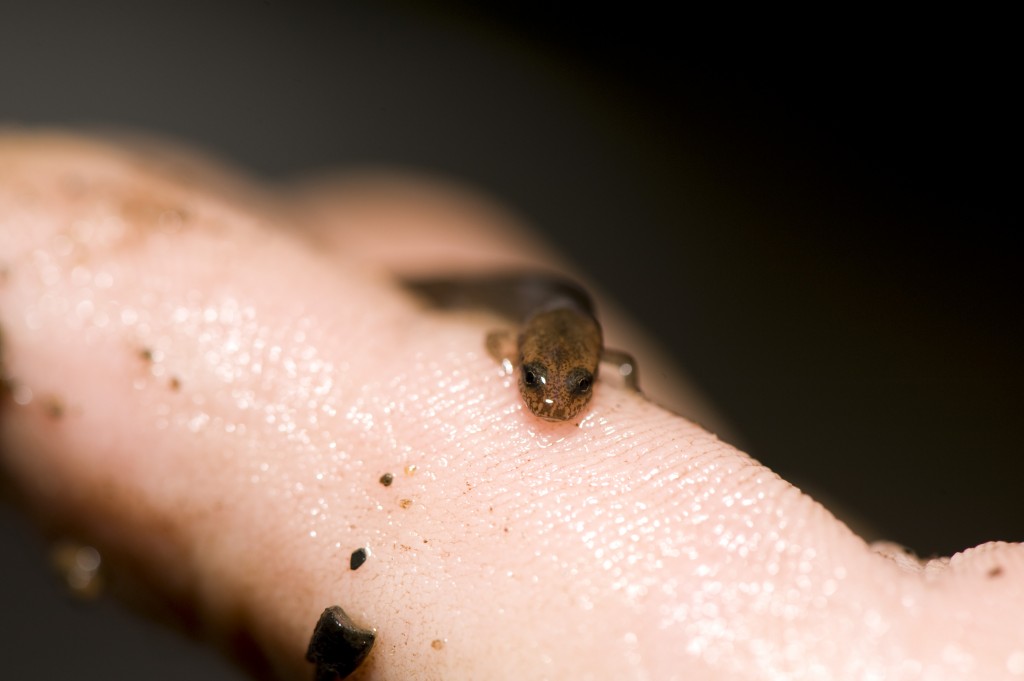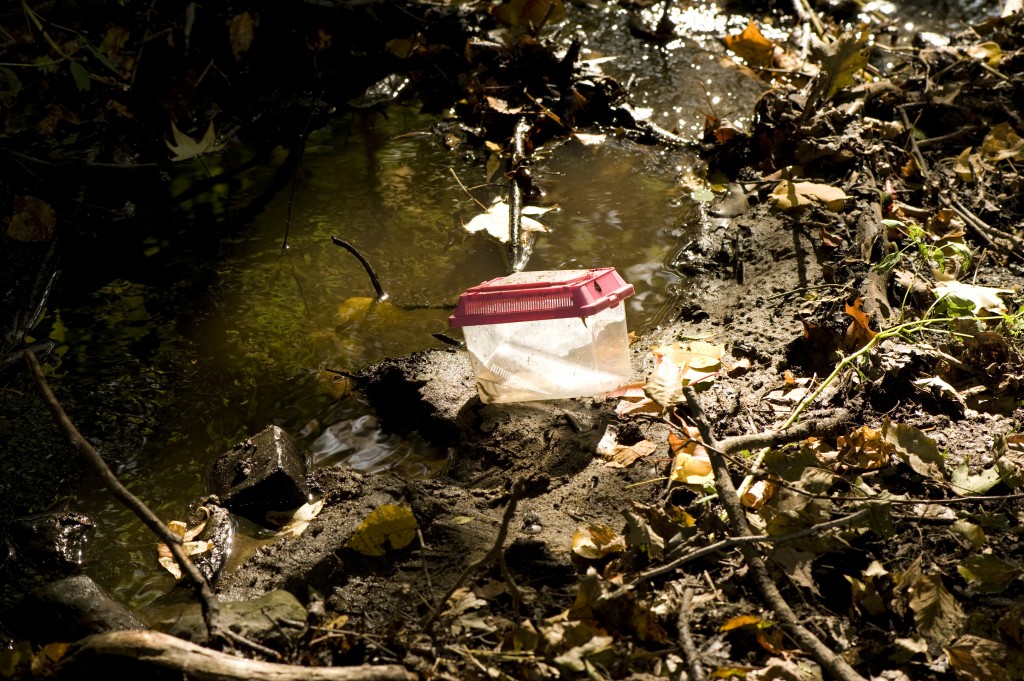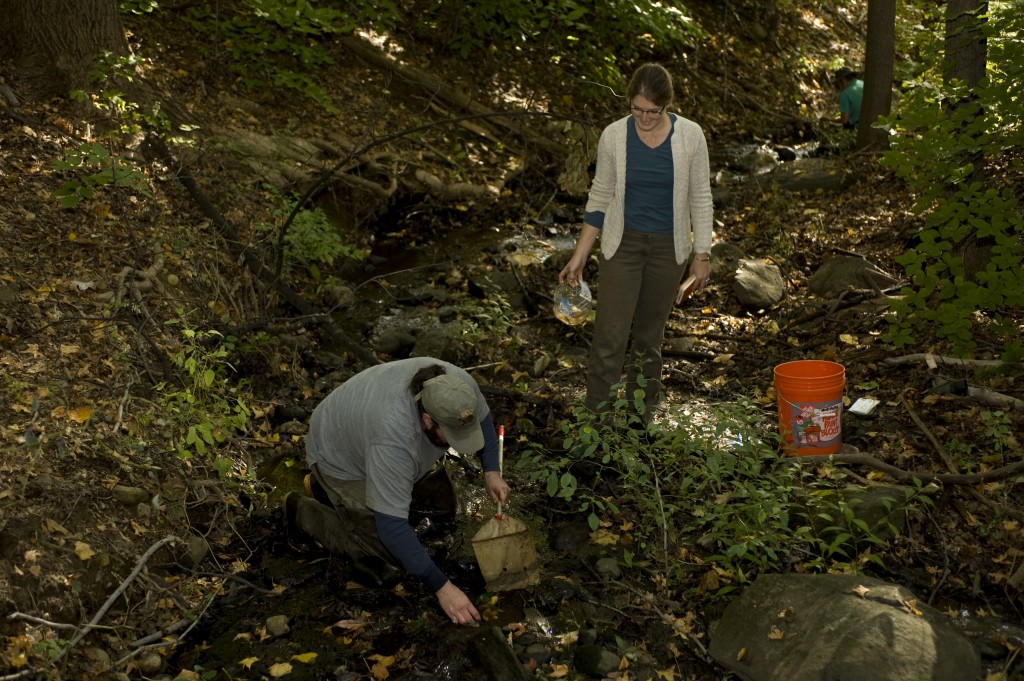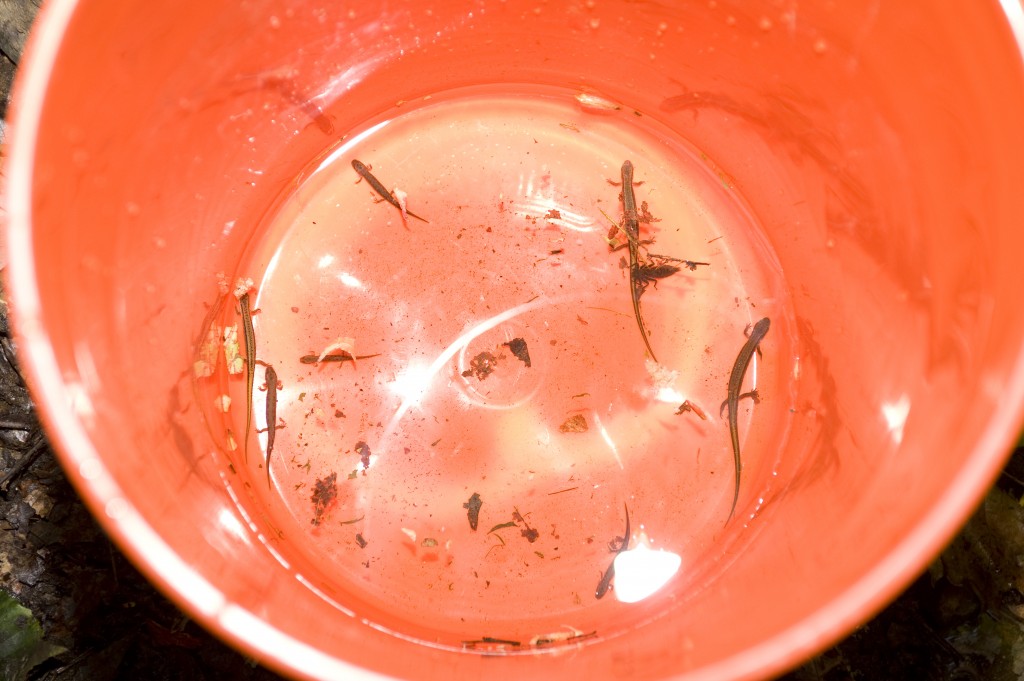Science in the Forest: Salamanders
Posted in Around the Garden, Science on November 12 2010, by Plant Talk
 The New York Botanical Garden contains not just an amazing array of flora, it is also home to an amazing diversity of fauna. There are hawks and owls, Jose the beaver, squirrels of many colors, bunnies, tiny mice, various migrating birds, and I hear tell of a duet of turkeys (though I haven’t yet seen them for myself). But it is one of the Gardens smallest animals that was our attention a few weeks ago: salamanders.
The New York Botanical Garden contains not just an amazing array of flora, it is also home to an amazing diversity of fauna. There are hawks and owls, Jose the beaver, squirrels of many colors, bunnies, tiny mice, various migrating birds, and I hear tell of a duet of turkeys (though I haven’t yet seen them for myself). But it is one of the Gardens smallest animals that was our attention a few weeks ago: salamanders.

The Garden’s native Forest is home to two distinct populations of these small amphibians: Plethodon cinereus, the terrestrial Redback Salamander and Eurycea bislineata, the aquatic Northern Two-Lined Salamander.
Being amphibians, and thus dependent upon proximity to healthy water to live and spawn in, the Northern Two-Lined salamander is an important indicator of an area’s ecological health.

On October 16, my co-worker and I accompanied wildlife biologist Michael McGraw from Applied Ecological Services as he went salamander hunting (seriously, no joke). Wearing hip-high waders and wielding what looked like a slightly larger version of the kind of net I once used to move my pet goldfish from his tank while I cleaned it, we watched as Mike knealt in a chilly stream and flipped rocks, all the time watching for the tiny, speedy salamanders.

As he worked, Mike shared more fascinating facts about salamanders and science in the Forest than we could ever have imagined. Here are a few of our favorites:
– This past spring Mike was involved in a “calling amphibian study” along the Forest’s waterways. In layman’s terms, it was a study of “strategic ribbiting.”
– Unlike the Northern Two-Lined salamander, the Redback salamander has evolved so that it is no longer tied to a water supply for breathing and breeding.
– The Redback salamander is thought to be the most abundant form of biomass in some northern deciduous forests. In a suitable area, you may be able to at least one “under any rock you flip.”
– Northern Two-Lined salamanders can spend several years in a larval state with external gills.
– Conversely, Redbacked salamanders hatch fully formed as miniature replicas of an adult.
– In drought years the Redbacked salamander will migrate both horizontally and vertically (like into mammal and worm burrows) to keep their skin moist.

– Redbacked salamanders are “haters, not lovers.” They are super-aggressive fighters, but some studies suggest that during times of extreme environmental stress they become more tolerant of each other.
– During times of extreme cold, Northern Two-Lined salamanders will bury themselves in thick pads of sand and hibernate until warmer temperatures return.
– Since salamanders use their entire skin as an organ, it’s impossible to attach radio telemetry packs to them. This makes it nearly impossible to understand the overwintering habits of these extremely small, super delicate amphibians.
Through the generosity of J.P.Morgan, the Presenting Sponsor of Global Biodiversity Programs, The Garden’s Native Forest has become an important location for scientists to come and study humankind’s impact upon the environment and the animals and plants that live within it. We thank them for their amazing support.

